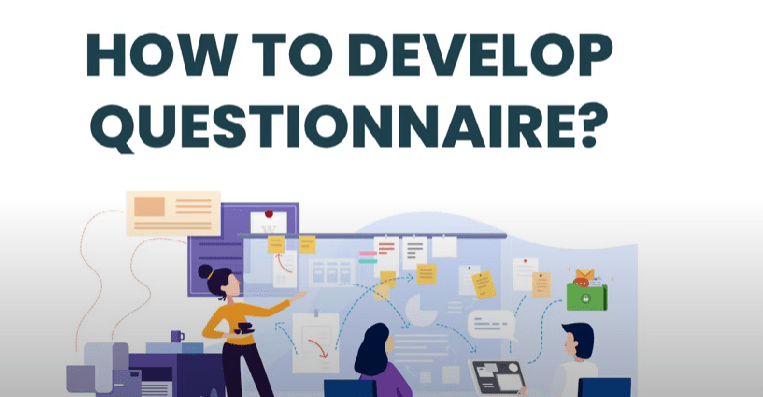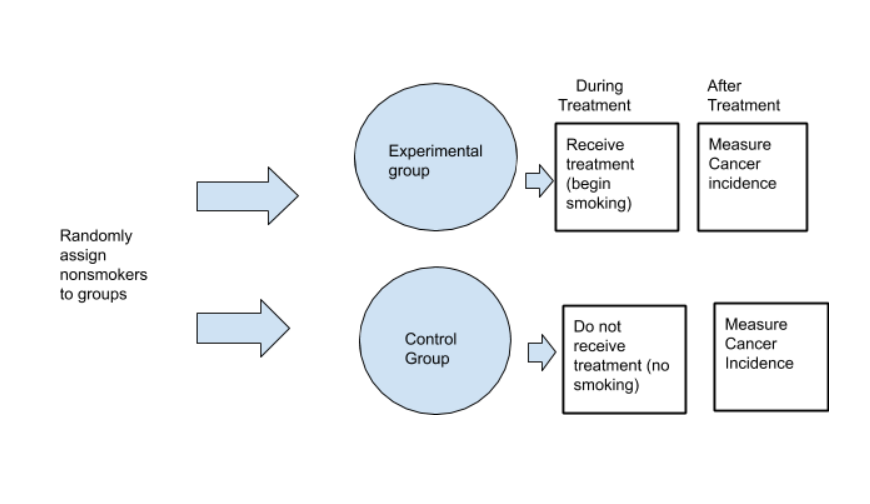Do you know the major problems researchers can face if they don’t craft productive PhD research questionnaires? They may be unable to replicate the research and are also unable to help the readers understand the answers of the research questions. And not only that, but crafting ineffective questionnaires for your PhD research, can lead to your entire research being a futile prospect. But the story takes a turn.
After extensive research, we have understood that there are basically 3 steps to craft effective questionnaires for your PhD research. In this blog, we are going to describe those 3 steps so that you not only craft effective questionnaires but also help others to craft Effective Questionnaires for your PhD research. So, let’s get started, shall we?
But wait 🤚!!! Do these three methods help you create good surveys for your PhD research? is the first query you ought to address to yourself. I mean, is there a crucial query you ought to have answered before diving into the subject? Please think through and then read the remaining blog.
Why is it necessary to design efficient questionnaires for PhD research? So you might not be able to create the ideal questionnaire for your PhD if you don’t know the reason. As a result, you could be asking, “What is the solution?” Please read the remaining posts on the blog to learn more about this.
Crafting effective questionnaires is crucial for PhD research for several reasons:
- Obtaining reliable and valid data: Effective questionnaires ensure that the data collected is reliable and valid, which is essential for making accurate conclusions and recommendations based on the research findings.
- Enhancing the credibility of the research: If a questionnaire is poorly constructed, it can undermine the credibility of the research and make it difficult to convince others of the findings.
- Improving response rates: An effective questionnaire is more likely to be completed by respondents, resulting in higher response rates and more representative data.
- Reducing bias: A well-crafted questionnaire reduces the potential for bias in the responses by ensuring that questions are clear, unbiased, and focused on the research objectives.
- Saving time and resources: By ensuring that the questionnaire is well-designed, researchers can save time and resources by collecting data that is directly relevant to the research question.
- Facilitating data analysis: An effective questionnaire can make data analysis easier and more accurate by ensuring that the questions are structured in a logical and consistent manner.
Hence, crafting an effective questionnaire is essential for obtaining reliable and valid data, enhancing the credibility of the research, improving response rates, reducing bias, saving time and resources, and facilitating data analysis. So, let’s jump into knowing the answers to these questions.
PhD research questionnaires development and validation

Before moving with this part, we have something important to discuss regarding the development of the PhD research questions. Can you guess what? It is as important as knowing the development process of PhD research questions.
Developing effective research questions is an essential step in the process of conducting a PhD research project. Here are some tips to help you develop effective PhD research questions:
- Start with a broad topic: Begin by identifying a broad topic area that you are interested in and that has not been extensively researched. The topic should be significant and relevant to your field of study.
- Review existing literature: Conduct a thorough review of existing literature to identify research gaps and potential areas of exploration.
- Narrow down your focus: Once you have identified a research gap, narrow down your focus by formulating research questions that are specific, focused, and clear. Avoid broad and vague questions that are difficult to answer.
- Make sure your research questions are feasible: Your research questions should be feasible and answerable within the timeframe and resources available for your PhD project.
- Test your questions: Share your research questions with your supervisor and peers to get feedback and refine them further.
- Make sure your research questions are original: Ensure that your research questions are original and contribute to the existing body of knowledge in your field.
- Revise and refine: Continuously revise and refine your research questions throughout the PhD project as you gain more knowledge and insights.
Remember that developing effective PhD research questions is an iterative process and requires time, effort, and collaboration with your supervisor and peers.

Now, another question can come in our mind which is “why validation is needed for PhD research questionnaires?” It will help you decide whether to validate the questionnaires or not. So, let us know the answer to this question and then decide.
Validation is essential for PhD research questionnaires for several reasons:
- Ensuring reliability: Validation helps ensure that the questionnaire measures what it is intended to measure consistently across different participants and situations. This increases the validity of the data that is gathered.
- Minimizing measurement errors: Validation helps identify and minimize measurement errors that could lead to inaccurate data and potentially flawed research conclusions.
- Increasing validity: Validation helps ensure that the questionnaire is measuring the construct or concept it is intended to measure. This increases the validity of the data collected and the research conclusions.
- Enhancing credibility: A validated questionnaire enhances the credibility of the research and can make it easier to convince others of the research findings.
- Improving research quality: A validated questionnaire can lead to better quality research by ensuring that the data collected is relevant, reliable, and valid.
- Meeting ethical standards: Validating the questionnaire helps ensure that participants are not subjected to unnecessary or irrelevant questions, which is important for meeting ethical standards in research.
Hence, validation is needed for PhD research questionnaires to ensure reliability, minimize measurement errors, increase validity, enhance credibility, improve research quality, and meet ethical standards.
Validating a PhD research questionnaire involves several steps. Here are some key steps to consider:
- Develop a clear research question: The first step in validating a questionnaire is to develop a clear research question that the questionnaire is designed to answer.
- Determine the type of validity: There are different types of validity that a questionnaire can have, such as content validity, construct validity, criterion-related validity, and face validity. Determine which type(s) of validity are most relevant to your research.
- Develop the questionnaire: Develop the questionnaire based on the research question and the type(s) of validity being assessed. Ensure that the questions are clear, unbiased, and relevant to the research objectives.
- Conduct a pilot study: Administer the questionnaire to a small sample of participants (e.g., 10-15) to identify any problems with the questionnaire and assess the validity of the questions.
- Evaluate the questionnaire: Evaluate the questionnaire for content validity, construct validity, criterion-related validity, and face validity based on the data collected from the pilot study.
- Refine the questionnaire: Refine the questionnaire based on the feedback received during the pilot study and the validity assessment.
- Administer the questionnaire: Administer the final version of the questionnaire to the target population.
- Analyze the data: Analyze the data collected from the questionnaire to determine the reliability and validity of the questionnaire.
- Report the results: Report the results of the validity assessment in the research report, including the methods used to assess validity, the results of the assessment, and any limitations of the questionnaire.
Hence, validating a PhD research questionnaire involves developing a clear research question, determining the type(s) of validity to be assessed, developing the questionnaire, conducting a pilot study, evaluating the questionnaire, refining the questionnaire, administering the questionnaire, analyzing the data, and reporting the results.
Now, it’s time to go to the 2nd step which can help you a little more in crafting better questions in PhD research.
Types of validation of PhD research questionnaires

Now, it’s time to understand the different types of validation of the PhD research questionnaire. But again, the questioning will not end. Why do we need to know about different types of validation of PhD research questionnaires?
Knowing about different types of validation of PhD research questionnaires is important for several reasons:
- Ensuring the reliability and validity of data: Different types of validation can help ensure that the data collected from the questionnaire is reliable and valid, which is essential for making accurate conclusions and recommendations based on the research findings.
- Selecting the appropriate type of validation: Depending on the research question and the type of data being collected, different types of validation may be more appropriate. Knowing about different types of validation can help researchers select the most appropriate type(s) of validation for their research.
- Enhancing the credibility of the research: A well-validated questionnaire enhances the credibility of the research and can make it easier to convince others of the research findings.
- Meeting ethical standards: Validating the questionnaire helps ensure that participants are not subjected to unnecessary or irrelevant questions, which is important for meeting ethical standards in research.
- Improving research quality: Validating the questionnaire can lead to better quality research by ensuring that the data collected is relevant, reliable, and valid.
Now, I think there is no question left in this part except knowing the types of validation of PhD research questionnaires. If you have any questions in your mind, then you can comment below so that we can update the blog. So, let us jump into the answer to this question.
There are several types of validation of PhD research questionnaires. Some of the most typical varieties are listed below:
- Content validity: Content validity refers to the extent to which the questionnaire items adequately cover the intended content area. To assess content validity, researchers typically seek input from subject matter experts or use established guidelines or criteria to evaluate the relevance of the questionnaire items.
- Construct validity: Construct validity refers to the extent to which the questionnaire items measure the intended construct or concept. To assess construct validity, researchers may use statistical techniques, such as factor analysis or confirmatory factor analysis, to examine how well the questionnaire items align with the underlying construct.
- Criterion-related validity: Criterion-related validity refers to the extent to which the questionnaire items are related to an external criterion or standard that is known to be related to the construct of interest. To assess criterion-related validity, researchers may compare the questionnaire scores to scores on a standardized test or other measures of the same construct.
- Face validity: Face validity refers to the extent to which the questionnaire items appear to be relevant and appropriate to the participants. To assess face validity, researchers may ask participants to review the questionnaire and provide feedback on the clarity, relevance, and appropriateness of the items.
- Concurrent validity: Concurrent validity refers to the extent to which the questionnaire items correlate with an external criterion measured at the same time. For example, if a questionnaire is designed to measure depression, researchers may compare the questionnaire scores to scores on a depression scale administered at the same time.
- Predictive validity: Predictive validity refers to the extent to which the questionnaire items predict future behaviour or outcomes related to the construct of interest. For example, if a questionnaire is designed to measure job satisfaction, researchers may use the questionnaire scores to predict future job performance or turnover.
Hence, the most common types of validation of PhD research questionnaires include content validity, construct validity, criterion-related validity, face validity, concurrent validity, and predictive validity.
Principles and methods of PhD research questionnaires
We will divide this blog into two parts, in one part, we will describe the principles of PhD research questionnaires and in the next part, we will describe the methods of PhD research questionnaires. So, let us start the blog with the first part.
Understanding the principles of PhD research questionnaires is important because it enables a researcher to design effective and relevant questionnaires for their research. By following these principles, the researcher can ensure that the questions are clear, relevant, specific, feasible, original, testable, and significant, which will help them to gather accurate and useful data to answer their research questions.
Additionally, understanding the methods of designing and administering research questionnaires will help the researcher to avoid common pitfalls and mistakes in the process, such as asking biased or leading questions, administering the questionnaire to an inappropriate population, or failing to pilot test the questionnaire. Ultimately, a well-designed research questionnaire can be a valuable tool for gathering data in a PhD research project and can contribute to the development of new knowledge in the researcher’s field of study.
When formulating research questions for a PhD project, there are several principles that you should keep in mind:
- Clarity: Your research questions should be clear and concise so that readers can easily understand what you are investigating.
- Relevance: Your research questions should be relevant to your field of study and contribute to the existing body of knowledge.
- Specificity: Your research questions should be specific enough to guide your research and help you to focus on the key issues that you want to explore.
- Feasibility: Your research questions should be feasible to answer given the resources and time available for your PhD project.
- Originality: Your research questions should be original and innovative so that they contribute to the development of new knowledge in your field.
- Testability: Your research questions should be testable through empirical research methods so that you can gather data to support or refute your hypotheses.
- Significance: Your research questions should be significant in terms of their potential impact on your field of study, and should address important research gaps or unanswered questions.
By following these principles, you can develop research questions that will guide your PhD project and contribute to the advancement of knowledge in your field.

Now, it’s time to know the second part of this question which is the methods of PhD research questionnaires. It is the last step for us to craft better questionnaires for PhD research.
Research questionnaires can be a useful tool for gathering data in a PhD research project. When designing a research questionnaire, you should consider the following methods:
- Identify the research questions: The first step is to identify the research questions that you want to answer. Your questionnaire should be designed to collect data that will help you to answer these questions.
- Choose the appropriate type of questions: Decide on the type of questions you will use, such as open-ended or closed-ended questions. Closed-ended questions are usually easier to analyze and quantify, while open-ended questions can provide more in-depth and nuanced responses.
- Determine the format of the questionnaire: The questionnaire can be administered online or in person, and can be structured or unstructured. The format will depend on the nature of your research questions and the target population.
- Develop the questions: Develop clear and concise questions that are easy to understand and answer. Avoid using jargon or technical language that may be unfamiliar to your respondents.
- Pilot tests the questionnaire: Before administering the questionnaire to your target population, conduct a pilot test with a small group of people to identify any potential issues or misunderstandings.
- Administer the questionnaire: Once the questionnaire is finalized, administer it to your target population. You may need to provide instructions or assistance to ensure that respondents understand the questions and how to answer them.
- Analyze the data: After collecting the data, analyze it using statistical or qualitative methods, depending on the nature of the data and research questions.
By using these methods, you can develop an effective research questionnaire that will help you to collect data and answer your research questions.
But wait!!! It’s not over yet. I hope you are a research enthusiast who wants to know more about creating better PhD research questions. Also, if you want us to help you in this matter, you can definitely contact us with the given contact information on the website.
We haven’t answered one question in this blog. Can you guess the question? Then tell us in the comments.

